Connecting lights in parallel is a common practice when it comes to setting up lighting fixtures. This method allows multiple lights to be connected and operate simultaneously, providing an increased amount of light output.
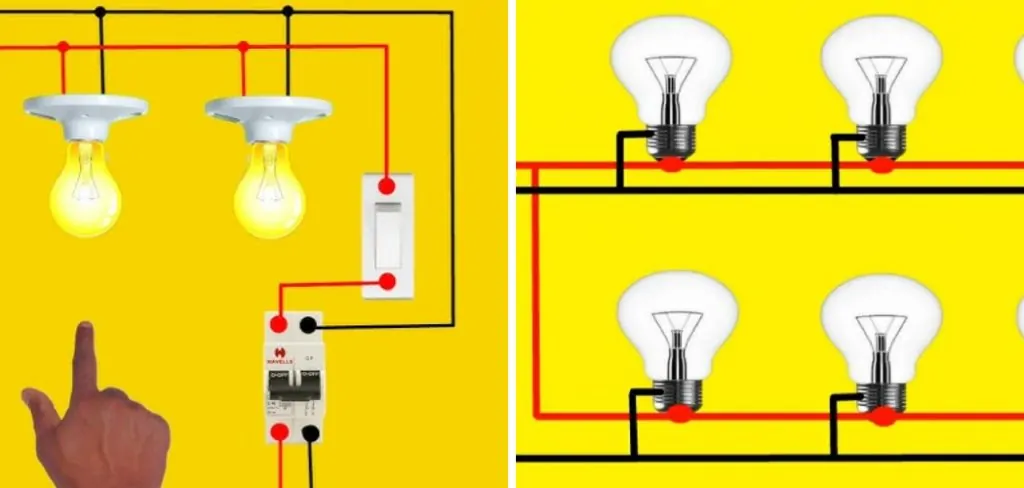
The main advantage of connecting lights in parallel is that each light can be controlled independently without affecting the others. This provides more flexibility and customization options when it comes to lighting design.
Additionally, if one light were to go out or malfunction, the rest would remain lit, ensuring a continuous flow of light. In this blog post, You will learn in detail how to connect lights in parallel.
Step-by-step Instructions for How to Connect Lights in Parallel
Step 1: Inspect the Lights
Before you begin connecting lights in parallel, it’s important to inspect each light and make sure they are all in proper working condition. Check for any frayed wires or damaged bulbs that may cause issues when connected.
Step 2: Gather Materials
To connect lights in parallel, you will need some basic materials such as wires, wire cutters, and electrical tape. Make sure to use the appropriate gauge of wire for the number of lights you plan on connecting. Before connecting any wires, it’s important to plan out the layout of your lights. This will ensure that everything is connected properly and looks aesthetically pleasing.
Step 3: Cut the Wires
Using your wire cutters, carefully cut the wires to fit the length needed for your layout. Make sure to leave some extra length on each end for easier connection. Using a wire stripper or a sharp knife, remove about half an inch of insulation from the ends of each wire. This will expose the copper wiring underneath.
Step 4: Connect Wires to Lights
Take one end of a wire and twist it around the positive (+) terminal of one light. Do the same for the negative (-) terminal with another wire. Make sure they are tightly connected. Continue connecting the wires to each light in the same manner until all lights have a positive and negative wire connected.
Step 5: Connect Wires Together
Take one end of your positive wire cluster and twist it together with the other positive wires. Do the same for the negative wire cluster. Once all wires are connected, use electrical tape to secure the connections and prevent any exposed wires.
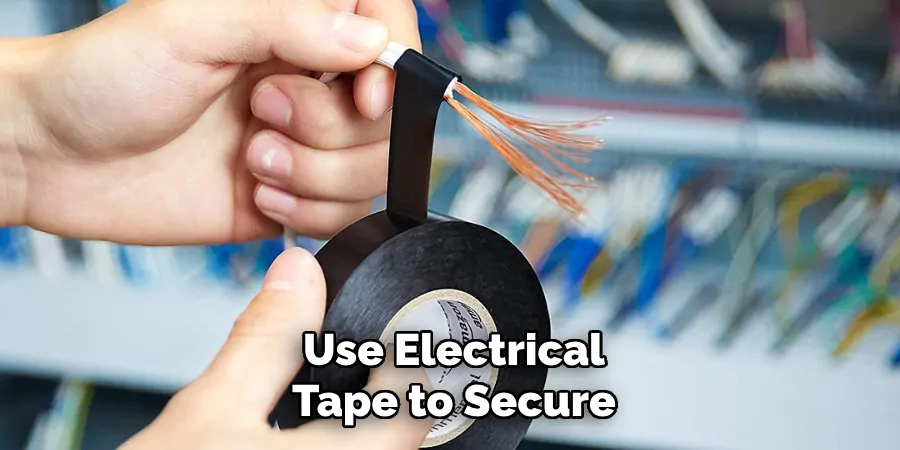
Step 6: Test Your Lights
Plug in your lights and make sure they are all functioning properly. If not, double-check your connections and make any necessary adjustments.
By following these simple steps, you can easily connect lights in parallel and create beautiful lighting arrangements for any occasion. Remember to always prioritize safety and double-check your connections before plugging in the lights.
Safety Tips for How to Connect Lights in Parallel
- Always Wear Protective Gear: When dealing with electrical wires and connections, it is important to always prioritize safety. Wear gloves, goggles, and other protective equipment to prevent any accidents.
- Turn Off the Power: Before attempting to connect lights in parallel, ensure the power source is turned off. This will ensure that you are not at risk of getting electrocuted.
- Use Proper Tools: Use the right tools for the job, such as wire cutters, strippers, and connectors. Improper tools can lead to faulty connections and potential hazards.
- Inspect Wires for Damage: Inspect them closely for any signs of wear or damage before connecting any wires. Replace any damaged wires to avoid potential electrical hazards.
- Follow Instructions: If you are using a specific lighting system, make sure to follow the manufacturer’s instructions carefully. This will ensure that your lights are connected properly and safely.
- Use Wire Connectors: To connect lights in parallel, it is recommended to use wire connectors instead of twisting or soldering wires together. Wire connectors provide a secure and reliable connection.
- Test the Connections: Once all the lights are connected in parallel, test the connection by turning on the power source. If any lights do not turn on, double-check the connections and make sure they are secure.
By following these safety tips, you can safely and effectively connect lights in parallel. Remember to always prioritize safety when working with electrical connections. Additionally, it is important to regularly check the connections for any signs of wear or damage and to seek professional help if needed.
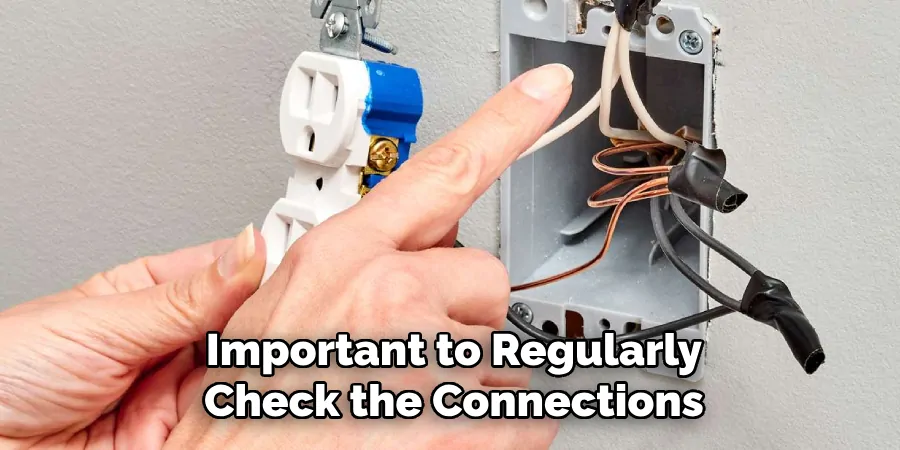
Benefits of Connecting Lights in Parallel
- Increased Reliability: When lights are connected in parallel, if one light burns out or stops functioning, the rest of the lights will continue to work. This is because each light has its own independent circuit and power source.
- Easy Troubleshooting: With parallel connections, it is easy to identify which light is causing a problem when there are issues with the lights. The other lights will still be functioning, indicating that the problem is with a specific light.
- Lower Voltage Drop: When lights are connected in series, the voltage throughout the circuit decreases, resulting in dimmer lights. However, with parallel connections, each light receives the full voltage supply, ensuring brighter and more consistent lighting.
- Flexibility in Design: Parallel connections allow for more flexibility in design as lights can be added or removed without affecting the rest of the circuit. This makes it easier to create and adjust custom lighting designs as needed.
- Increased Safety: Since each light has its own individual circuit, there is a lower risk of electric shock when handling or replacing lights. It also reduces the risk of fire hazards, making it a safer option for lighting.
- Cost-effective: Connecting lights in parallel can be more cost-effective as it reduces the need for additional wiring and reduces the amount of power needed to light up all the lights. This can result in lower energy bills for users.
- Better Performance: Lights connected in parallel perform better than those connected in series. This is because each light receives the full voltage supply, resulting in consistent and brighter lighting.
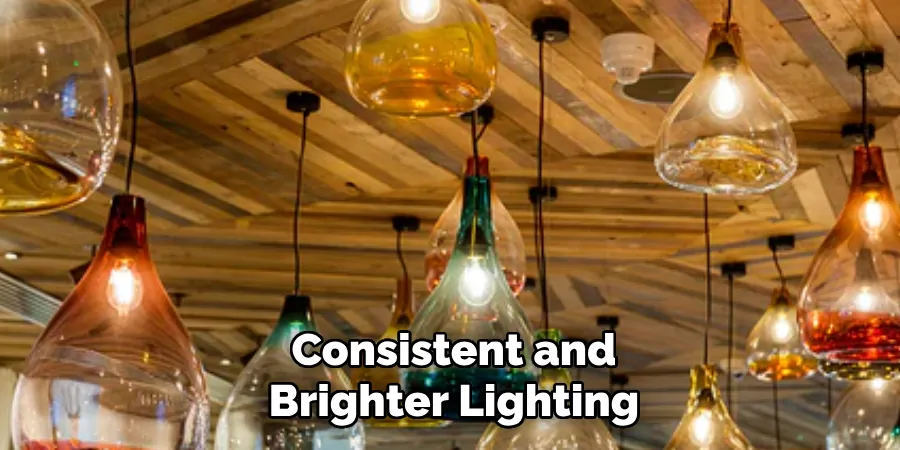
By understanding the benefits of connecting lights in parallel, it is clear that this type of connection is advantageous for various lighting applications. Whether it’s for home or commercial use, parallel connections offer increased reliability, safety, and cost-effectiveness while providing better performance.
Safety Considerations for Connecting Lights in Parallel
- Always use the correct type of wires and connectors when connecting lights in parallel. Using mismatched or damaged wires can lead to electrical hazards such as short circuits and electrocution.
- Ensure that the total wattage of the connected lights does not exceed the rating of your power source. Exceeding the maximum wattage can cause overheating and potentially start a fire.
- To protect yourself from shocks, use insulated tools and gloves when working with electrical connections. Also, make sure to turn off the power source before starting any work.
- Properly secure all connections to prevent them from coming loose or exposing them over time. Loose connections can lead to flickering lights or even cause them to stop working altogether.
- Regularly inspect the wires and connectors for any signs of wear or damage. If you notice any, replace them immediately to avoid potential hazards.
- If connecting lights outdoors, make sure that all connections are weatherproof and rated for outdoor use. Exposure to moisture can cause electrical shorts and pose a safety risk.
- Consider using a surge protector when connecting a large number of lights in parallel. This can help prevent damage to your lights or electrical system from power surges.

By following these safety considerations, you can ensure that connecting lights in parallel is done safely and efficiently. Always prioritize safety when working with electricity to avoid potential hazards.
Advantages of Connecting Lights in Parallel
- Increased Reliability and Safety: Connecting lights in parallel ensures that each light operates independently of the others. This means that if one light were to fail, the rest would continue to function normally. This increases reliability and enhances safety, as there is no risk of total failure or overload.
- Equal Brightness Across Lights: When lights are connected in series, the brightness of each individual light will decrease as more lights are added to the circuit. However, connecting lights in parallel ensures that each light receives the same voltage and thus maintains equal brightness.
- Easy Troubleshooting: If one light stops working in a parallel connection, it is easy to identify and replace without disrupting the entire circuit. This saves time and effort in troubleshooting and repairing, as the remaining lights remain unaffected.
- Cost-Effective: Parallel connections are more cost-effective in terms of wiring and installation. As each light operates independently, there is no need for long and complex wiring to connect them, reducing material costs and labor time.
- Flexibility in Design: With parallel connections, adding or removing lights from the circuit without affecting the rest is possible. This allows for greater flexibility in design, as the number of lights can be easily adjusted according to space and lighting needs.
- Longer Bulb Life: Lights connected in series tend to have shorter bulb life due to unequal voltage distribution. Parallel connections ensure that each light receives equal voltage, thereby increasing bulb lifespan.
- Versatility: Parallel connections allow for a mix of different types and wattages of lights to be connected on the same circuit. This allows for more versatility in lighting design, as different types of lights can be used together for a more personalized and unique atmosphere.
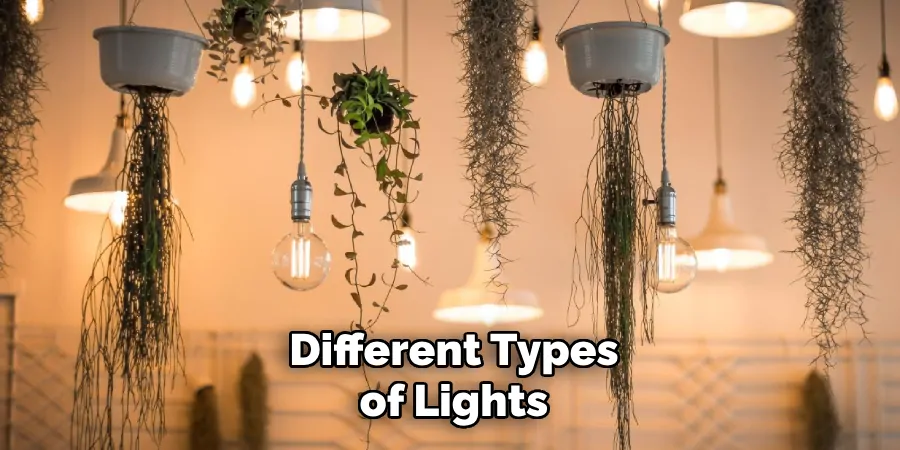
In addition to these advantages, connecting lights in parallel also allows for easier automation and control. With each light operating independently, adding sensors or timers for automatic on/off functions is easier. This adds convenience, helps save energy, and reduces electricity bills.
Special Considerations for Led Lights When Connecting Them in Parallel
- Use Equal Resistance: When connecting LED lights in parallel, it is important to use equal resistance for each branch of the circuit. This will ensure that the current is distributed equally throughout the branches and prevent any one light from receiving too much or too little current.
- Consider Voltage Drop: Another important factor to consider when connecting LEDs in parallel is voltage drop. Each component in a circuit will have some resistance, which will cause a voltage drop across that component. When connecting multiple LEDs in parallel, these voltage drops can add up and affect the overall brightness of the lights.
- Use Appropriate Resistors: In order to prevent any issues with voltage drop when connecting LED lights in parallel, it is important to use appropriate resistors for each branch of the circuit. These resistors can be calculated using Ohm’s Law, taking into account the input voltage and desired current for each LED.
- Utilize Diodes: Diodes can also be used when connecting LED lights in parallel to prevent any reverse current from flowing through the circuit. This is especially important if one of the LEDs were to become damaged or fail, as it could affect the other connected LEDs in parallel.
- Consider Power Supply Capacity: It is important to ensure that the power supply being used can handle the total current of all the LED lights connected in parallel. If not, this could lead to issues such as dimming, flickering lights, or even damage to the power supply.
- Pay Attention to Polarity: When connecting LED lights in parallel, it is important to pay attention to the polarity of each LED. Connecting them in reverse could cause them to not work properly or even damage them.
- Consider Thermal Management: Lastly, it is important to consider thermal management when connecting LED lights in parallel. LEDs produce heat, and when multiple are connected in parallel, this can add up. Proper thermal management techniques should be implemented to ensure the LEDs do not overheat and potentially fail.

These special considerations are important to remember when connecting LED lights in parallel to ensure optimal performance and longevity. By paying attention to factors such as equal resistance, voltage drop, appropriate resistors, diodes, power supply capacity, polarity, and thermal management, you can successfully connect LED lights in parallel and achieve bright, efficient lighting.
Common Mistakes to Avoid When Connecting Lights in Parallel
In addition to the special considerations mentioned above, common mistakes should be avoided when connecting LED lights in parallel. These mistakes can result in issues such as flickering or dimming lights, shortened LED lifespans, or even damage to the circuit.
- Improperly Calculating Resistor Values: As mentioned before, appropriate resistors for each circuit branch are crucial. However, if the resistor values are incorrectly calculated, it can lead to issues such as uneven brightness or overloading of the LEDs.
- Neglecting Voltage Drop: Voltage drop should always be taken into account when connecting lights in parallel. Failure to do so can result in a decrease in the overall brightness of the lights.
- Using Mismatched Leds: It is important to ensure that all the LEDs connected in parallel are of the same rating. Using mismatched LEDs can lead to uneven brightness and possibly damage to the weaker LED.
- Incorrectly Connecting Diodes: While diodes can be helpful in preventing reverse current flow, they must be connected correctly. Improperly connecting them can result in a short circuit or even damage to the LEDs.
- Not Using a Heat Sink: Thermal management is crucial when connecting LED lights in parallel. Neglecting to use a heat sink can result in overheating of the LEDs and potentially cause them to fail.
- Overloading the Power Supply: It is important to ensure that the power supply being used can handle the total current of all the LEDs connected in parallel. Overloading the power supply can cause flickering or dimming lights and potentially damage it.
- Ignoring Polarity: As with any electronic component, paying attention to polarity when connecting LED lights in parallel is important. Neglecting this can result in improper functioning or even damage to the LEDs.
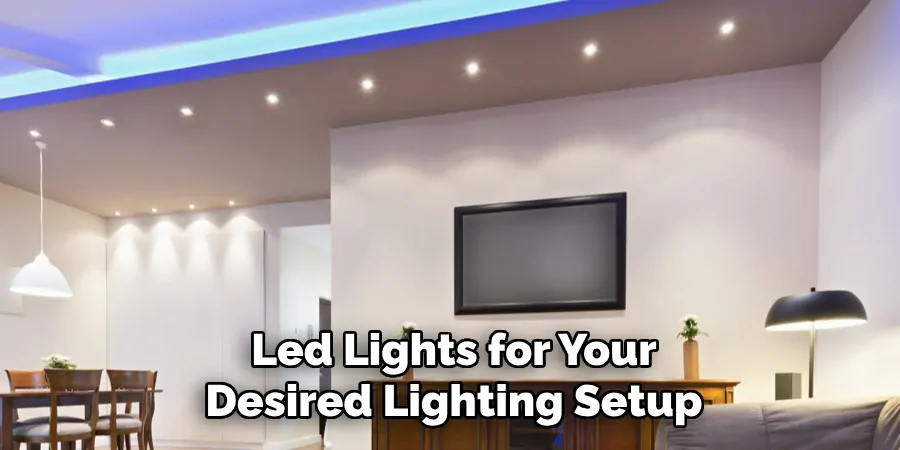
These common mistakes can be easily avoided by being mindful of the special considerations mentioned earlier and double-checking all connections before powering on the circuit. By avoiding these mistakes, you can ensure a successful and safe parallel connection of LED lights for your desired lighting setup.
What Are Some Creative Ways to Use a Parallel Connection of Lights for Decorative Purposes?
LED lights connected in parallel can be a versatile and creative tool for adding unique and eye-catching decorative elements to any space. Here are some ideas on how you can use a parallel connection of LED lights for decorative purposes:
- Create a Twinkling Canopy: By hanging multiple strings of LED lights in parallel to the ceiling, you can create a twinkling canopy effect above your bed or seating area. This can add a cozy and dreamy atmosphere to any room.
- Make a Diy Marquee Sign: Using LED string lights in parallel, you can create your own marquee sign with any word or phrase you choose. This can be a fun and personalized addition to any room or event.
- Light Up a Photo Display: By connecting LED lights in parallel and securing them to a corkboard or frame, you can create a unique and illuminated photo display. This is perfect for showcasing memories or displaying artwork.
- Add Ambiance to Outdoor Spaces: Stringing multiple sets of LED lights together in parallel can create a warm and inviting atmosphere on your patio or deck. You can even use different colored lights for a festive touch.
- Make a Statement Wall: By attaching LED lights in parallel to a blank wall, you can create a stunning and illuminated focal point in any room. This is a great way to add some personality and color to your space.
- Light Up Your Staircase: Placing LED strip lights in parallel along the bottom or sides of each stair tread can add a decorative touch and provide additional safety by illuminating the steps.
- Create an Accent Piece: By placing LED string lights in parallel inside a glass jar or vase, you can create a unique and eye-catching accent piece for your home. This is a great way to repurpose items you already have on hand.
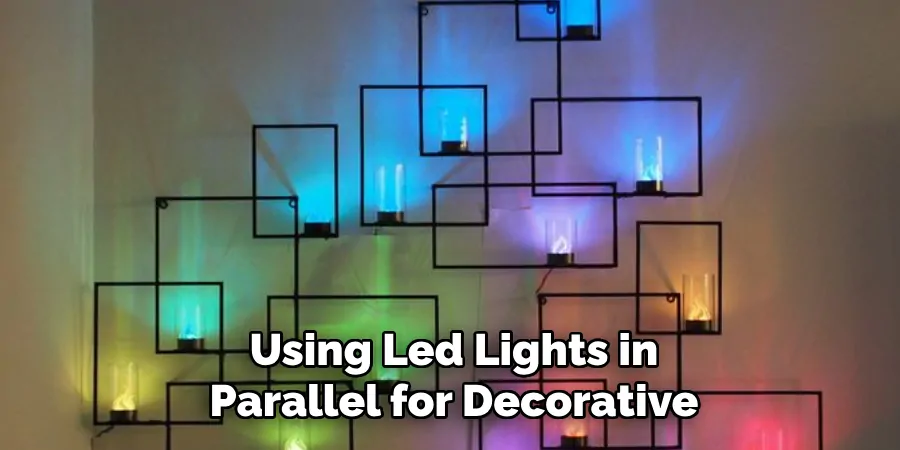
The possibilities are endless when it comes to using LED lights in parallel for decorative purposes. With a little creativity and the right technique, you can easily enhance the ambiance of any space with these versatile lights.
Conclusion
In conclusion, connecting lights in parallel is an important concept to understand for any DIY enthusiast or electrician. As discussed, this method allows for the independent functioning of each light source, ensuring that if one bulb burns out, the rest will continue to work. Furthermore, connecting lights in parallel also helps distribute the voltage evenly across all bulbs, reducing energy waste and increasing efficiency.
This is especially important for large lighting setups, such as in commercial buildings or outdoor events. This method also allows for easier troubleshooting and maintenance of the lighting system.
If one light malfunctions, it can be easily identified and replaced without disrupting the entire circuit. Reading this post has helped you learn how to connect lights in parallel. Make sure the safety precautions are carried out in the order listed.

